{{ this.results.length }} Results
Your search for {{ this.pattern }} didn't return any results.
Snake Plant Care Guide
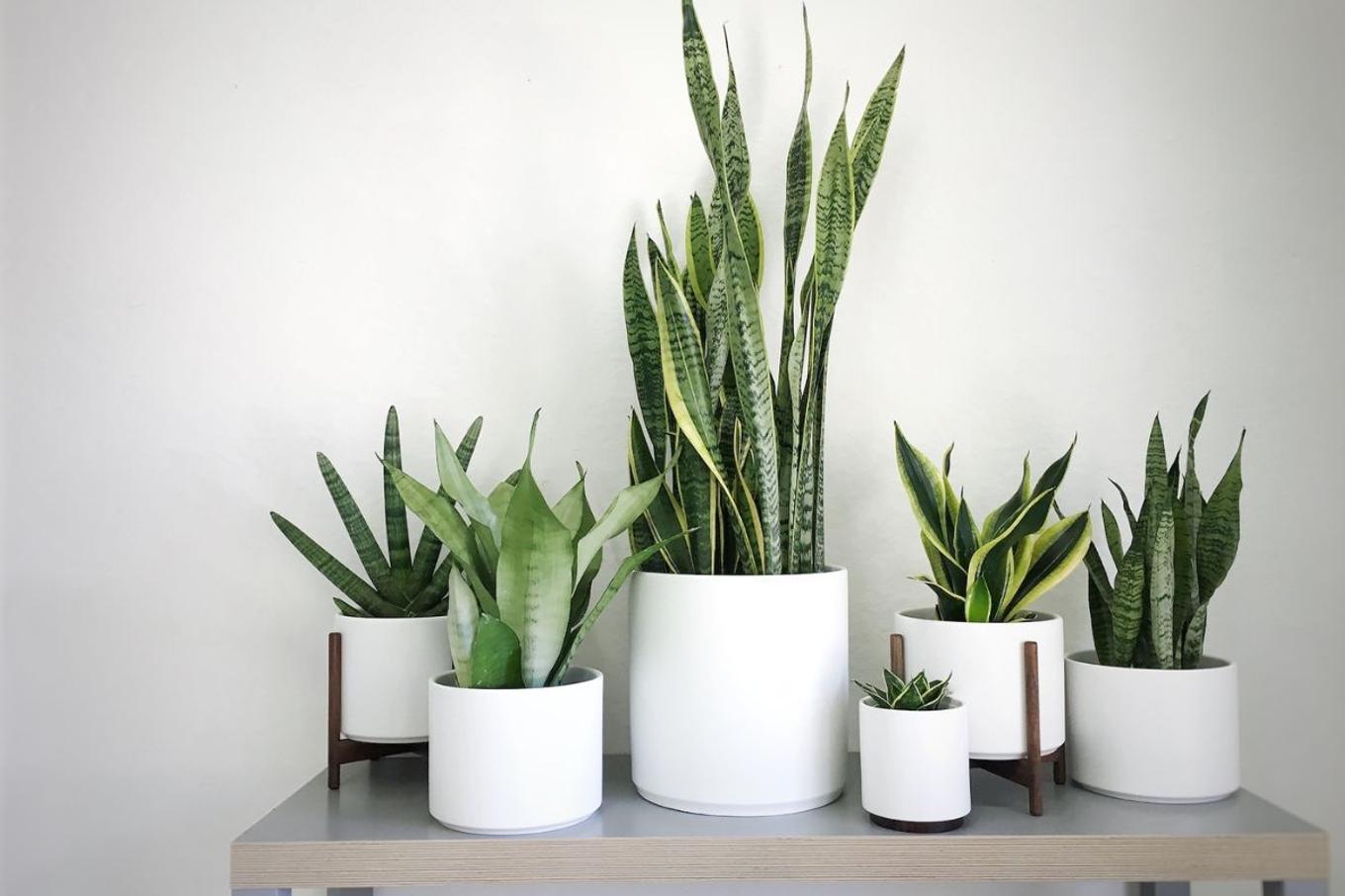
Snake Plants, including the classic Sansevieria Laurentii, the sage-green Moonshine, and the striking Trifasciata, are timeless indoor houseplants admired for their upright, sculptural shapes and incredibly hardy nature. Technically a succlent, Snake Plants are known for their air-purifying qualities and ability to withstand even the most dire neglect, making them a great choice for both beginners and experienced yet busy plant enthusiasts. Whether you prefer the bold, vertical lines of the traditional green-and-yellow Laurentii, the soft silver hues of Moonshine, or the unique look of the Fernwood Mikado, there's a snake plant to fit any space. Discover how to grow and care for these resilient, low-maintenance plants that thrive on neglect.
Simple Care Instructions for the Snake Plant
Light Requirements
Snake Plants thrive in bright, indirect light but are highly adaptable and can tolerate lower light conditions. Some varieties, like the classic Sansevieria Trifasciata, do well in low light, while others, like the Moonshine variety, will thrive in medium to bright light. All Snake Plants can withstand some direct sunlight, or plenty of direct sunlight if properly acclimated.
Watering Needs
Snake plants prefer moderate watering, allowing for the soil to fully dry out before watering again. Overwatering is a common issue and can lead to root rot, so it’s better to under-water than over-water. Depending on temperature and humidity, most snake plants only need to be watered about once every 2–3 weeks, making them perfect for low-maintenance plant owners.
If you're unsure about watering, consider using a moisture meter to always know the best time to water your Snake Plant. Check out our favorite minimalist moisture meter here.
Humidity and Temperature
Snake Plants thrive in average indoor humidity and can tolerate drier air.
For temperature, Snake Plants prefer a range of 60–85°F (16–29°C). Avoid exposing them to temperatures below freezing, as extreme cold stress can cause damage to their leaves.
Soil and Fertilizing
Snake Plants are succulents, which means they thrive in well-draining succulent or cactus soil.
Give your Snake Plant a nutrient boost using a balanced liquid fertilizer during spring and summer. In fall and winter, when the plant’s growth slows, you can reduce or pause fertilizing.
Common Problems and Troubleshooting Tips
Brown and/or Mushy Leaves – Overwatering
Symptoms: Brown, mushy, or wilting leaves that may feel soft or slimy to the touch.
Cause: Overwatering is the most common cause of this issue, as it leads to root rot. When snake plants sit in waterlogged soil for too long, the roots can become damaged, causing the leaves to turn brown, mushy, and weak.
Solution: Check the soil for moisture. If the soil is soaked, remove the plant from its pot and inspect the roots. Trim away any rotten, blackened roots and allow the plant to dry out for a day or two. Repot the plant in fresh, well-draining soil and ensure your watering schedule is more consistent, allowing the soil to dry out between waterings. Snake plants prefer to be on the drier side, so it's better to err on the side of underwatering.
Brown Tips – Underwatering
Symptoms: Brown, dry, and crispy tips on the Snake Plant.
Cause: Snake Plants are drought-tolerant, but if they go too long without water, they can develop brown tips. This typically occurs when the plant hasn't been watered enough, and the soil dries out too much.
Solution: Water your snake plant thoroughly, ensuring the soil is evenly moist but not waterlogged. Make sure the pot has proper drainage to prevent water from sitting at the bottom. Going forward, water the plant when the top 1–2 inches of soil feel dry. If the brown tips are bothersome, trim them off by following the natural shape of the leaf.
White Spots – Calcium Build-Up
Symptoms: White or brown dry spots on the leaves or the surface of the soil.
Cause: Calcium deposits are often a result of hard water, which contains high levels of minerals like calcium and magnesium. When water evaporates from the leaves, these minerals are left behind, creating visible white spots.
Solution: To prevent further build-up, try using distilled or filtered water to water your snake plant. If you notice white spots on the leaves, wipe them off gently with a damp cloth. If the spots are stubborn, use a mixture of water and vinegar (1:1 ratio) to clean the affected areas. Regularly check for calcium deposits on the leaves and wipe them away as needed. You can also try flushing your plant's soil with distilled water to reduce future spots.

White spots may indicate calcium build up in soil.
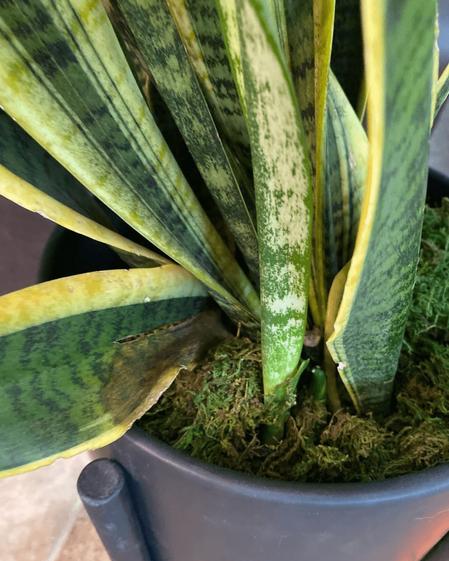
The beginnings of a waterlogged Snake Plant.
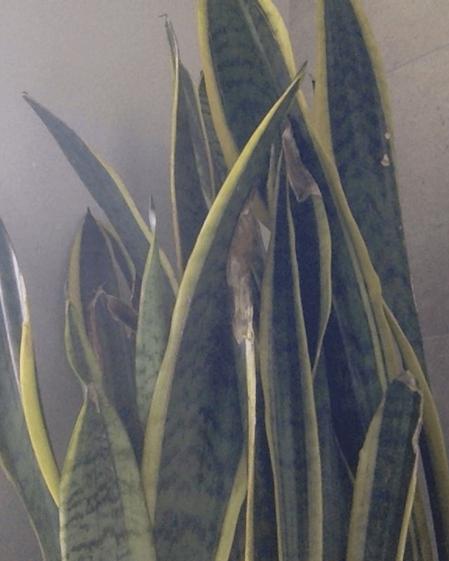
Brown tips may be a sign of inconsistent or under watering.
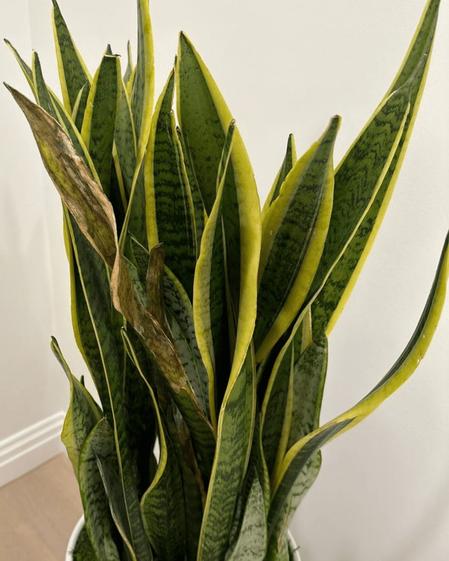
An overwatered Snake Plant.
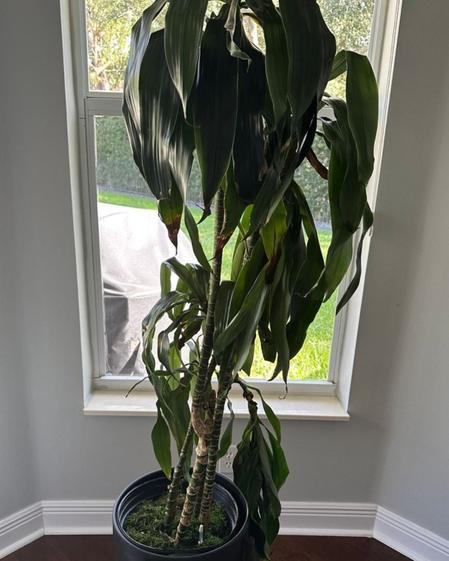
Droopy Dracaena Lisa, most likely underwatered
Seasonal Care Tips
Seasonal Care Tips for Snake Plants
Snake plants are incredibly adaptable and can thrive in a wide range of light conditions, but there are a few things to keep in mind as the seasons change.
In the winter months, snake plants tend to go into a period of dormancy. They require less water and can tolerate lower light levels.
A little note: Snake plants typically don’t flower indoors. While it’s possible for them to bloom under ideal conditions, don’t expect to see their fragrant white or yellow blooms unless you’re providing them with enough light and warmth to trigger blooming — which is more likely to happen when the plant is kept outside in warmer months.
Snake Plant Varieties
Snake Plants are a popular group of hardy, low-maintenance houseplants known for their striking, upright foliage and air-purifying qualities. With various species and varieties to choose from, there’s a snake plant to suit any space. Here are some of the most well-known and widely grown varieties:
Laurentii (Sansevieria trifasciata ‘Laurentii’)
One of the most recognizable Snake Plant varieties, Laurentii features tall, sword-like leaves with striking yellow edges. This variety is known for its resilience, thriving in low light and requiring minimal care. It’s an excellent choice for beginners and works well in any room that needs a bit of greenery.
Black Coral (Sansevieria ‘Black Coral’)
This variety stands out with its dark, almost black, mottled leaves that create a dramatic contrast in any space. Black Coral is perfect for those who want a unique, more sculptural look in their indoor plant collection. It’s also just as easy to care for as other snake plants, tolerating a wide range of light conditions and requiring only occasional watering.
Moonshine (Sansevieria trifasciata ‘Moonshine’)
Moonshine is known for its silvery, light-colored foliage that provides a soft, glowing look in any room. It’s a stunning variety that can add a touch of elegance and modernity to your home décor. Like other snake plants, Moonshine is easy to care for, tolerating low light and needing minimal water.
Fernwood Mikado (Sansevieria trifasciata ‘Fernwood Mikado’)
With its slender, spiky leaves that grow in a dense cluster, Fernwood Mikado is a smaller but equally stunning variety of snake plant. Its leaves have a beautiful pattern of light and dark green stripes. It’s perfect for tabletops or smaller spaces and requires the same low-maintenance care as other varieties, needing just occasional watering and indirect light.
No matter which variety you choose, snake plants are an excellent, easy-care addition to any home!